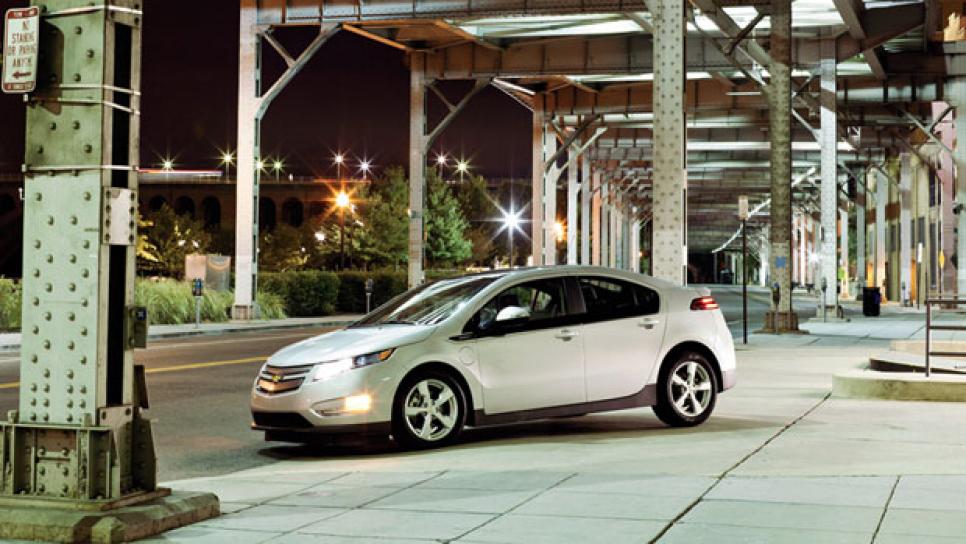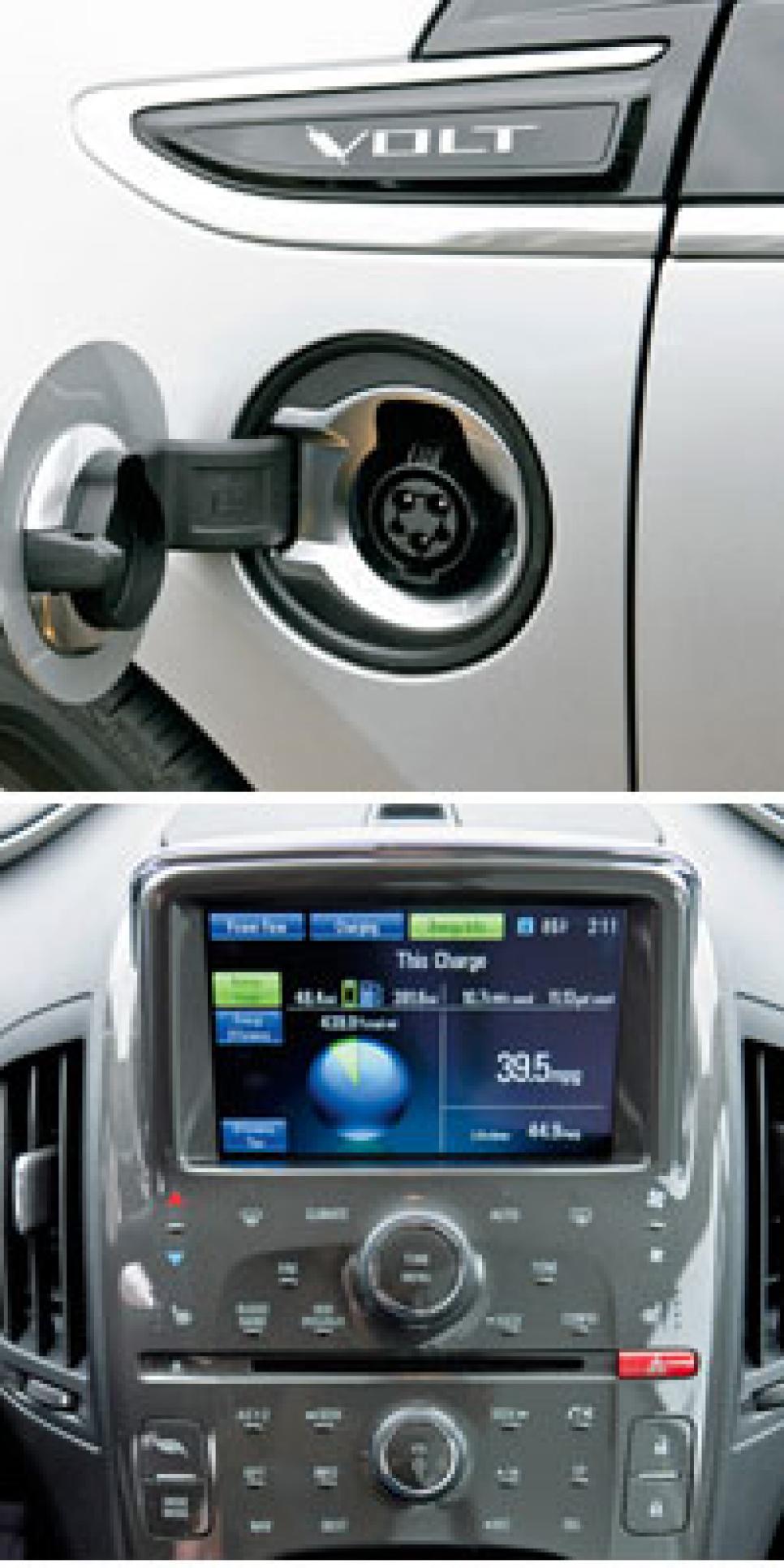Courses
Electric Avenue

Charging the Volt's battery liberates you from fuel, 40 miles at a time.
Let's get one confession out of the way upfront: I thoroughly enjoy burning fossil fuel. The motor in my 40-year-old Oldsmobile swallows gas at a truly profligate rate--to the point that even driving a Mini Cooper for my everyday car doesn't return my carbon footprint to some kind of ecological equilibrium.

As a dedicated petrol guzzler, I'm probably not the early-adopter Chevrolet is targeting with the Volt--four-door hatchback that promises a legitimate 40 miles of highway-speed cruising on a 149-horsepower electric motor before a tiny, frugal 83-horsepower gas motor kicks in to extend the car's range to more than 300 miles. Nevertheless, the prospect of navigating GM's (mostly) silent, wedge-shape science project down the I-95 corridor for a weekend inside the Washington, D.C., Beltway was too compelling to miss.
Because, after all, what is the Volt if not the top of the golf-cart evolutionary chain?
Even when you're ready for it, rolling away from the curb for the first time in a real car under battery power is an eerie experience. With the windows down, you can hear a faint cosmic whine on departure--like the sound Luke Skywalker's landspeeder made in the original "Star Wars." After that, the Volt really is silent--so much so that GM equipped the turn signal with a button to activate a separate, more subtle horn hoot for oblivious pedestrians.
We made it 39 miles down I-95 at 75 miles per hour before the electric charge ran out, and propulsion switched seamlessly to the little gas motor. Gliding past the White House four hours later with a quarter of the 9.3-gallon fuel tank left, we had almost forgotten we were in an electric car. Only a few little internal-combustion grunts gave it away.
Well, that and the $44,000 sticker price. That's almost all battery technology, too, which leaves GM the tricky task of providing an interior worthy of a near-luxury car on what's left over. The seats adjust with old-school cranks and levers, and the plastic touch points in the cabin won't be confused with anything from Audi or Infiniti, but the arresting instrument screens and iPod-like touch controls on the center stack are tangible and reassuring reminders of your commitment to the cutting edge. The front and middle LCD displays toggle between standard car info--like speed, temperature and radio channel--to technical information on the Volt's raison d'être: battery performance. Jump on the accelerator and the cutaway schematic of the car's 435-pound battery system will show power leaving the lithium-ion cell and flowing to the wheels, and the shimmery green efficiency graphic in front of you on the dash will darken into an ominous gold.

The ultimate test of any electric car is always going to be its pain-in-the-ass factor: Can it integrate with the real world with no hassle? The Volt's battery takes eight hours to fully charge from a household outlet. (Expect to pay an extra $10 to $15 a month on your electric bill.) If you take short trips and have a power source in your garage where you can juice up at night, the Volt works. However, the car isn't at all fast or agile. Golf bags can't fit in the trunk lengthwise, but commuting back and forth to work at real-world speeds without ever using gas is unquestionably cool. Spending an afternoon hunting for the single street-level public car charging outlet in Northwest D.C.? Not as much. That will change as more cars like the Volt, Toyota's soon-to-debut plug-in Prius and Nissan's all-electric Leaf hit the road, but right now, you don't want to stray too far from the grid.
Happily, the Beltway's best public course--and far and away its best value--was within the range of a single charge from our hotel. Swan Point Yacht & Country Club
sits on a spit of land jutting from the eastern bank of the Potomac River, 30 miles downstream from D.C.
The Bob Cupp design feels like it was built at Kiawah Island
and floated 500 miles up the Atlantic coast. But unlike the fierce Ocean Course, you can play Swan Point without using a howitzer off the tee. The challenge comes from choosing your angles over the omnipresent marshland and water. We took advantage of the unbelievable regular midweek price of $79 for all you can play--27 holes in four hours, in our case--and returned to the parking lot in a familiar condition. Out of gas.